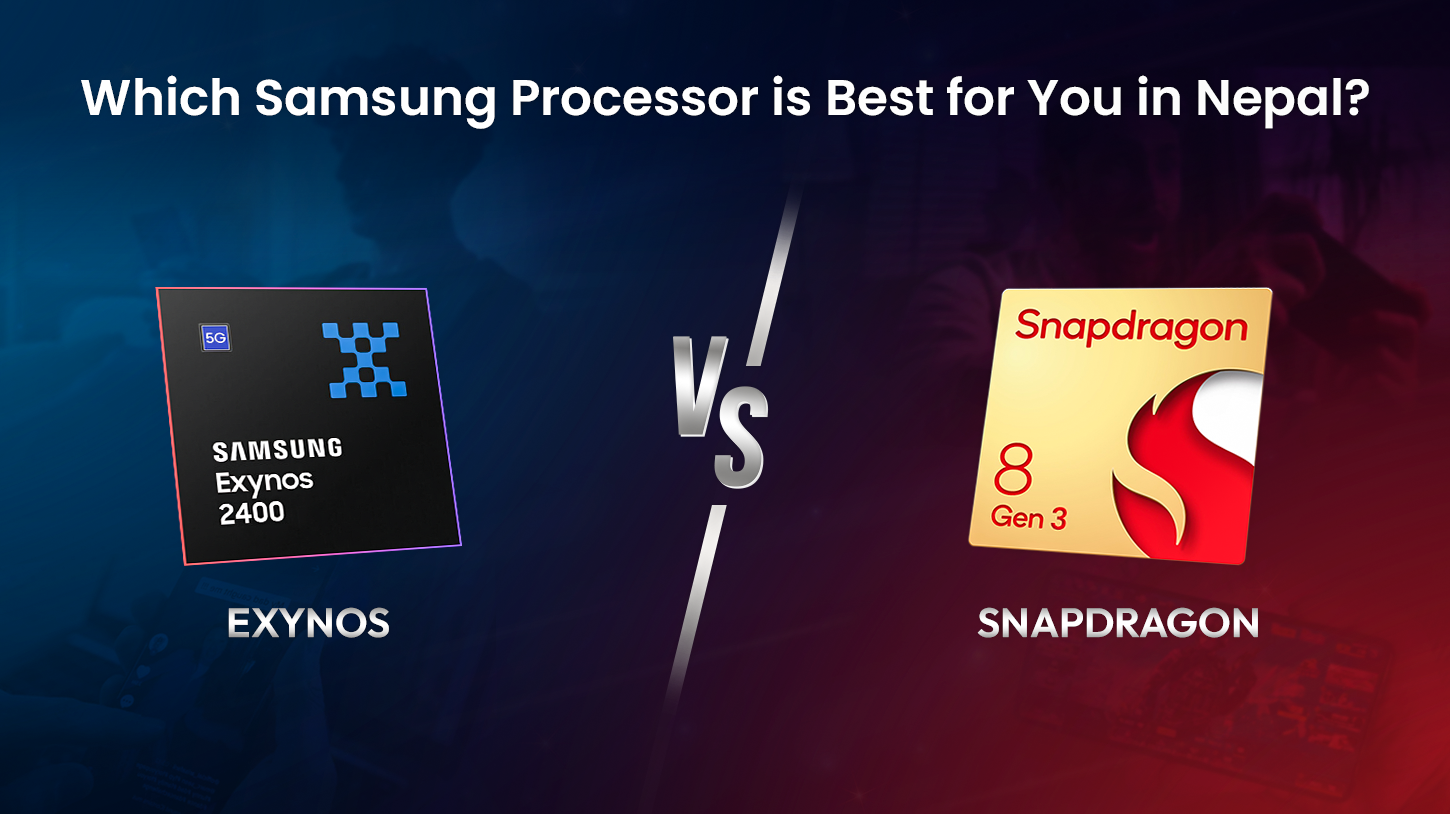
Samsung Exynos and Snapdragon
Which Samsung Processor is Best for You in Nepal?
When you plan to Buy a Samsung phone in Nepal, you must have already come across two processors: Exynos and Snapdragon. They sound like that techy phrase, don’t they? And yet, they do make a big difference in how smoothly your phone performs.
In this article, we’ll break everything down in simple terms so you can understand:
- What are Exynos and Snapdragon
- How they affect speed, battery, camera, and gaming
- Which is best for you, especially in Nepal
Let’s go ahead.
What Are Exynos and Snapdragon?
Every smartphone has a processor (also known as a “chip” or “chipset”) which is its brain. It does everything — from the speed at which apps open up, to how games run, to how long your battery lasts.”.
Exynos is Samsung’s proprietary processor. It’s made by Samsung and is usually found on phones sold in Europe, Asia, and Nepal.
Snapdragon is made by an American company called Qualcomm. Samsung implements it in phones for the US, China, and sometimes elsewhere.
The strange thing is: the same Samsung phone, like the Galaxy S24 or Galaxy S23, can have two models — one of which runs on Exynos and another with Snapdragon, depending on the region.
However, the Samsung Galaxy S25 models are all powered by the Qualcomm Snapdragon 8 Elite processor. This means all the galaxy S25 models will use the same Snapdragon chipsets regardless of the region or market.
In Nepal, Samsung stores normally sell official models with Exynos. But online stores, Indian importers, and the grey market also offer Snapdragon variants.
So… which is better? Let’s compare.
1. Performance (Speed, Smoothness, and Multitasking)
Snapdragon has a definite advantage when it comes to speed and smoothness.
Snapdragon processors are very quick at completing tasks, like gaming, video editing, or running several apps at once.
Exynos processors are improving, especially in current models, but they’re not quite as good as Snapdragon in heavy tasks.
Real-life example:
If you are a gamer using games like PUBG, Free Fire, or Genshin Impact, a Snapdragon phone will definitely provide smoother play, better graphics, and less heating. Exynos phones can also play these games, but tend to lag or heat up faster for longer usage.
Verdict: For better speed and smoother play, go for Snapdragon.
2. Battery Life
Battery life matters — especially in nations such as Nepal, where power outages and erratic power supply are more the norm than the exception.
Snapdragon processors use power more efficiently. That’s why your phone lasts longer on a single charge — even with video watching, web browsing, or social media.
Some of the latest Exynos processors, like the Exynos 2400, have also been bettered, but still drain more battery when heavily used.
Example:
Users of the Galaxy S23 Ultra with Snapdragon report improved battery life over those with the Exynos variant of the same phone.
Verdict: For longer battery life, Snapdragon is generally a better choice.
3. Camera and Image Quality
Samsung phones feature incredible cameras — and both Exynos and Snapdragon allow high-quality pictures. There are, however, minor differences in each processor’s approach to image processing.
Snapdragon chips usually capture sharper, crisper images with more detail — especially at night or in portrait mode.
Exynos chips may smooth out the photos, something that some people like for selfies but sometimes lacks as much detail.
Example
In Galaxy S22 Ultra camera testing, the Snapdragon version captured more detail in nighttime photographs and better color accuracy.
Verdict: If mobile photography is a top priority, Snapdragon beats it marginally.
4. Gaming Performance
Gaming is perhaps the easiest way to differentiate between the two chips.
Snapdragon chips have stronger graphics processors (referred to as GPUs), and hence more frame rates and the fluidity in games.
Exynos can also play games but may experience frame drops or heat-ups after playing full-featured games for 20–30 minutes.
Example:
In real tests, the Snapdragon 8 Gen 2 easily beats the Exynos 2200 in gaming performance, both in speed and heat management.
Verdict: If you’re a mobile gamer — even casual — go for Snapdragon.
5. Internet and Network Speed (5G and Wi-Fi)
As 5G slowly rolls out in Nepal, this is something to think about.
Snapdragon processors usually come with better and faster 5G modems and Wi-Fi chips.
Exynos chips do support 5G, though maybe not as fast or stable in some cases.
I mean, however, Nepal’s 5G is still developing, so let’s hope that this won’t be an issue for most users as yet.
Verdict: For future-proofing, the winner is Snapdragon.
6. Price and Availability in Nepal
Let’s talk about what most potential buyers are worried about: price and availability.
Exynos phones are officially sold in Nepal by Samsung. You get full warranty, support, and service centers. They are easier to buy in retail or online from authentic sellers.
Snapdragon phones usually are imported from India, UAE, or other countries. They might not carry a local warranty, and service can be difficult if something goes wrong with the phone.
Snapdragon phones are usually a bit more expensive as they’re considered to be better for performance.
Verdict:
- If you want official warranty and peace of mind, go with Exynos.
- If you want optimum performance and are okay buying from a grey seller, go with Snapdragon.
Exynos Vs Snapdragon Benchmark Test
Chipset benchmark is a standard test or set of tests to establish the performance of a chipset, or set of integrated circuits, controlling various functions in a smartphone or computer. The tests simulate real workloads and provide scores that can be used to establish performance comparables among various chipsets.
According to GSMArena, In benchmark tests, Snapdragon chipsets are slightly better in overall performance and power efficiency, especially in CPU-intensive activities like gaming, while Exynos chipsets are slightly better in certain areas like GPU performance and long-term performance with heavy usage.
Here’s a more specific comparison:
CPU Performance:
Snapdragon is slightly better in CPU benchmarks, especially in single-core and sustained performance with heavy load.
GPU Performance:
Exynos, especially with newer chipsets like the Exynos 2400, can provide a decent performance in GPU-intensive tasks thanks to its AMD RDNA-based GPU.
Sustained Performance:
Snapdragon processors are likely to show better stability and sustained performance under heavy load, while Exynos can see a more gradual decay in performance, which could lead to fewer sudden stutters.
Efficiency:
Snapdragon generally has a small advantage when it comes to watts per performance, i.e., providing more power using less power.
Specific Benchmarks:
Geekbench: Snapdragon may have a small advantage in single-core, but Exynos may have an advantage in multi-core.
AnTuTu: Snapdragon generally carries AnTuTu benchmarks.
3DMark: Exynos, especially those using AMD-based GPUs, can dominate 3DMark tests, especially those that feature ray tracing.
Examples:
The Galaxy S21 Ultra highlighted a clear difference between the two chipsets, with the Snapdragon 888 delivering better sustained CPU performance and handling throttling more efficiently than the Exynos 2100.
Fast forward to the Galaxy S24 series, and the gap has narrowed. The Exynos 2400, now paired with an AMD-branded GPU, performed impressively in benchmark tests like 3DMark. Meanwhile, the Snapdragon 8 Gen 3 continued to lead slightly in platforms such as AnTuTu and Geekbench.
Overall, both Exynos and Snapdragon chipsets bring strong performance to the table. The Exynos leans slightly ahead in overall speed and efficiency, while Snapdragon holds an edge in GPU-related tasks and sustained performance. Choosing between the two often comes down to personal preference—whether you’re looking for better gaming performance, multitasking ability, or GPU-heavy processing.
How to Check Which Version You Have
Here is a simple trick to check if your phone is Exynos or Snapdragon:
If your model number has “U” or “U1” at the end (e.g., SM-S918U1), then it’s Snapdragon.
If it has “B” at the end (e.g., SM-S918B), then it’s Exynos.
Key Differences:
| Feature | Exynos | Snapdragon |
|---|---|---|
| Manufacturer | Samsung | Qualcomm |
| Performance | Good, but often behind Snapdragon | Generally better performance |
| Graphics (GPU) | ARM Mali GPU | Adreno GPU (usually better for gaming) |
| Power Efficiency | Improving, but can lag | Often more efficient |
| AI/ML Performance | Competitive | Usually ahead |
Final Recommendation
Go for Snapdragon if:
- You’re a gaming/user who needs power
- You need improved battery and camera performance
- You’re not opposed to buying without official warranty
Go for Exynos if:
- You purchase from official Samsung shops in Nepal
- You desire warranty, support, and peace of mind
- You primarily use your phone for calling, social media, and light purposes
The good news is: both processors are good for regular use. Nobody will notice a big difference if they’re just planning on using their phone for normal things. But if you’re the type who requires the best performance, or plan on keeping your phone for 3+ years, then Snapdragon might be worth the extra search.
Checkout more products here!
You can also connect with us on: Facebook, Instagram, YouTube, and Tiktok!
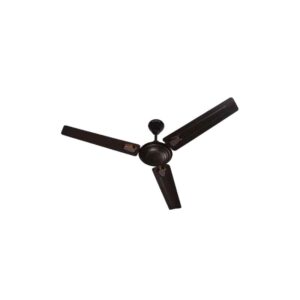
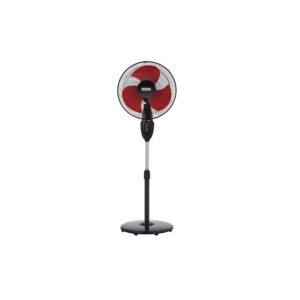

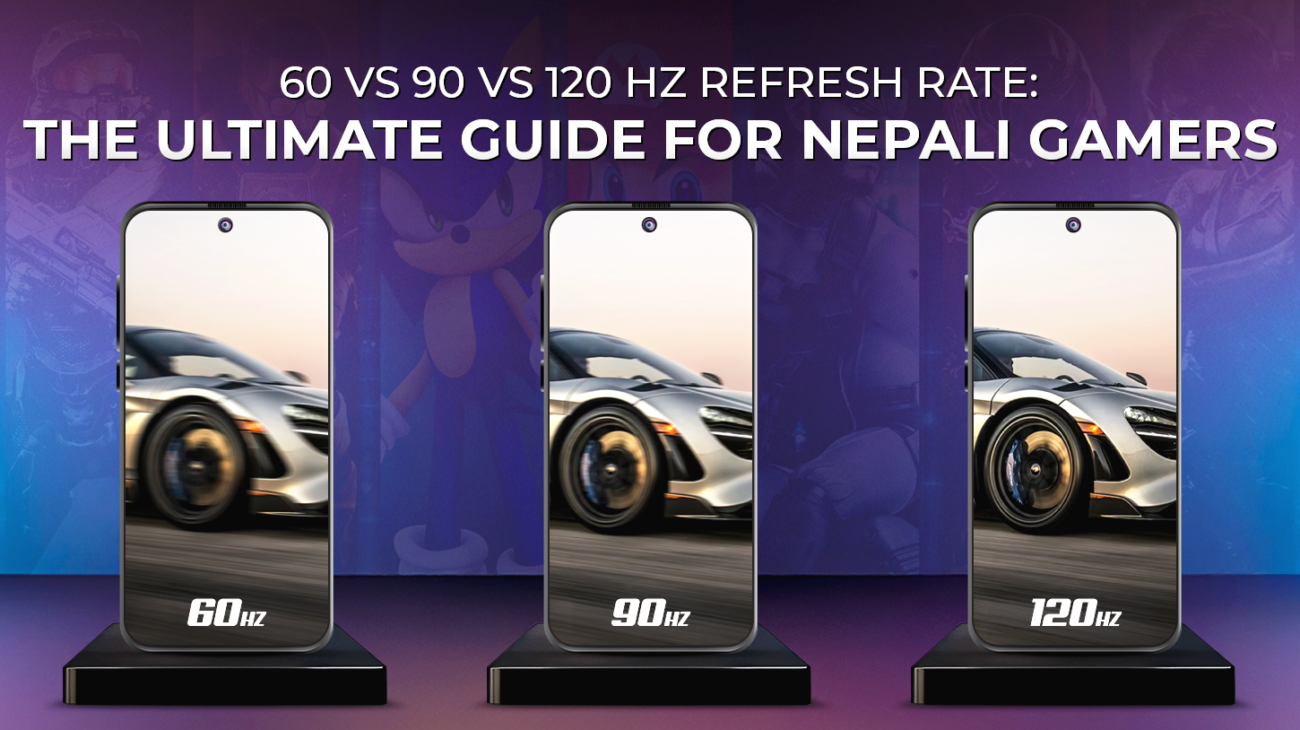
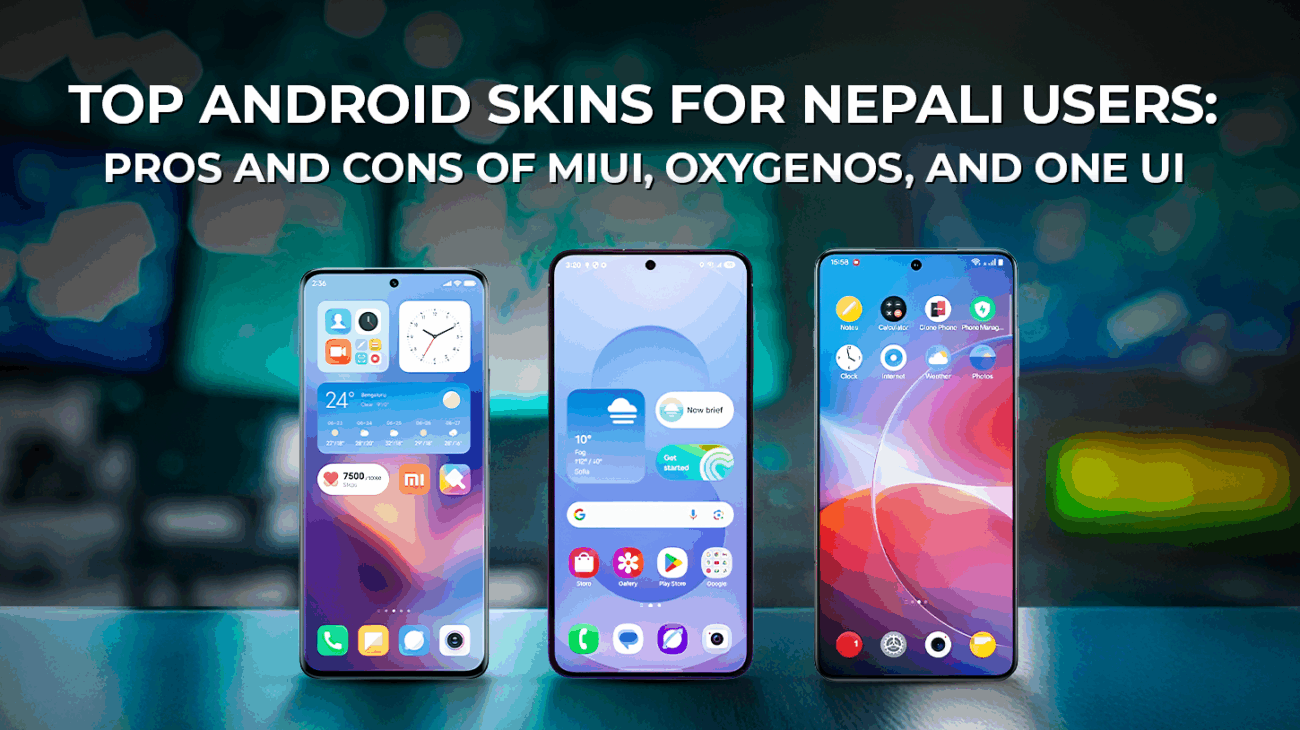



Add a review
Your email address will not be published. Required fields are marked *